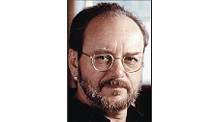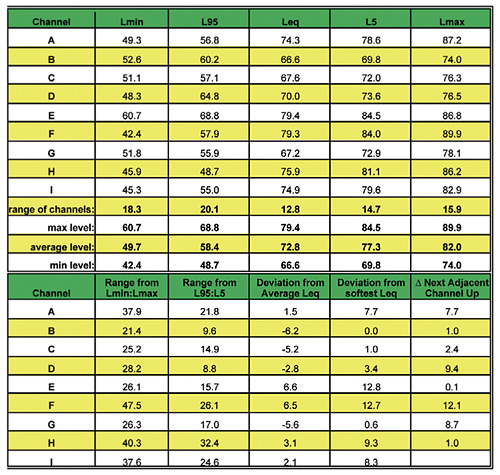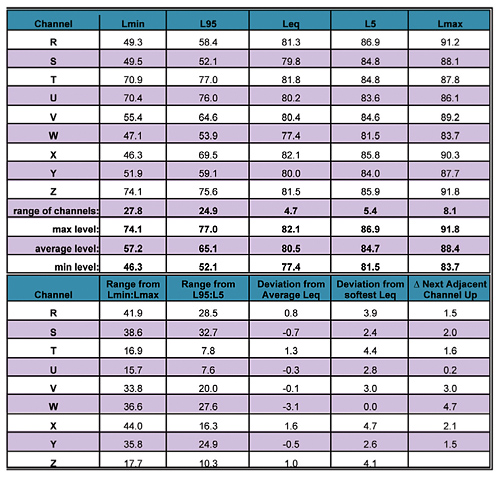Are We CALM Yet?

Our story... You may recall I've been ranting about variance in loudness levels on broadcast television for numerous years. You are probably also aware I have not been alone in this. I assume you may have heard that a law has been passed mandating more consistent loudness levels in television broadcasting—the CALM Act. This happened about a year ago.
Way back in 2009, I took it upon myself to make reasonably detailed level measurements of nine channels of broadcast TV and to report on them to you in this column ("Nine Channels on the Level," March 4, 2009). Well, last month I promised to take another listen, now that the CALM Act is in place (if not yet full force), and see if we're making any progress.
WHAT I MEASURED IN 2009
As you might not recall (due to repression or denial), the results of my 2009 measurements weren't pretty.
I took brief level histories (histograms) of nine adjacent channels in real time, during a late weekday afternoon. The levels were acoustical levels measured in dBC SPL at the mix position in my studio. The data I took included Lmin, L95, Leq, L5 and Lmax.

Table 1: C-wtd measurements in January 2009 In a perfect world, the acoustical levels of those nine channels would be pretty much the same (i.e. within 3 dB Leq and Lmax, certainly). But, in the TV broadcast world of 2009, Leq varied by almost 13 dB and Lmax varied by 16 dB. Even worse, the average change in level when changing from one channel to an adjacent one was a whopping 5.3 dB.
The implication of this is that it is likely the home viewer will desire to change the level every time he or she changes the channel. A 5+ dB change is, to put it gently, really annoying! I believe this, more than anything else, is what led to the CALM Act being written and enacted. Ugly stuff.
Late in 2009, I threw up my hands, pointed out this wasn't rocket science and I had nothing further to say about the subject! Off to sulk. On to other topics.
WHAT I MEASURED IN 2012
For this column, I have just made another set of acoustical measurements of another group of nine channels (some the same, some different). Again, I took late afternoon real-time C-weighted histograms (C-wtd).
The measured acoustical levels at my reference settings have crept up a bit over the years—some of that may be due to my studio sloth (and the fact that I've lowered my listening reference level) and some due to the effect of the CALM Act getting everybody on to the same, if somewhat louder page.
In my opinion, none of these changes are a big deal. What is a big deal is that those levels have, in fact, become far more consistent.

Table 2: C-wtd measurements in January 2012 In 2009 the range of Leq levels over nine channels was almost 13 dB. In 2012, it is down to 4.7 dB. Lmax in 2009 ranged over 16 dB, while today it is constrained to about 8 dB.
The best news has to do with average level change to an adjacent channel. In 2009 it was 5.3 dB, while in 2012 I have measured it to be down to 2.1 dB. That is really pretty good.
WHAT DOES IT ALL MEAN?
The implications of this are as follows. At an average level change of 2 dB, we aren't going to feel the need to change the level every time we change a channel. That's big! At a total range of 4.7 dB, our channel levels are fairly close to being in agreement.
It appears the force of impending law has effectively encouraged us to tighten up our processes and clean up our audio act. In a preliminary way, I think we can say this is certainly an improvement. It's too soon to call it a complete success, but if we can sustain this and refine it a bit more (Channel W, where are you?), we're there.
I've included two tables showing both sets of levels. Note that the individual channels are not the same and cannot be compared directly. For those of you who don't recall, Lmin is the lowest recorded level; L95 is the level exceeded 95 percent of the time; Leq is the level with average power for the whole measurement period; L5 is the level exceeded 5 percent of the time and Lmax is the highest recorded level.
Just so you know, I generally set my reference level 10 dB below the 2012 levels (85 dBC for a single channel) for casual viewing, or only 5 dB down when I want the audio to be close to a cinematic experience.
In these measurements, program ranged from college football to a soap to a voice-only courtroom show to news. I only hit one commercial while measuring, and it didn't stand out.
Looking ahead to future columns, I would welcome any requests or topic suggestions from you. In the meantime, it's nice to know that things are just a little bit better than they used to be.
Thanks for listening.
Dave Moulton is really calm now, and he's no longer gnashing his teeth while channel-surfing. However, you can still complain to him about anything at his website.
The professional video industry's #1 source for news, trends and product and tech information. Sign up below.

